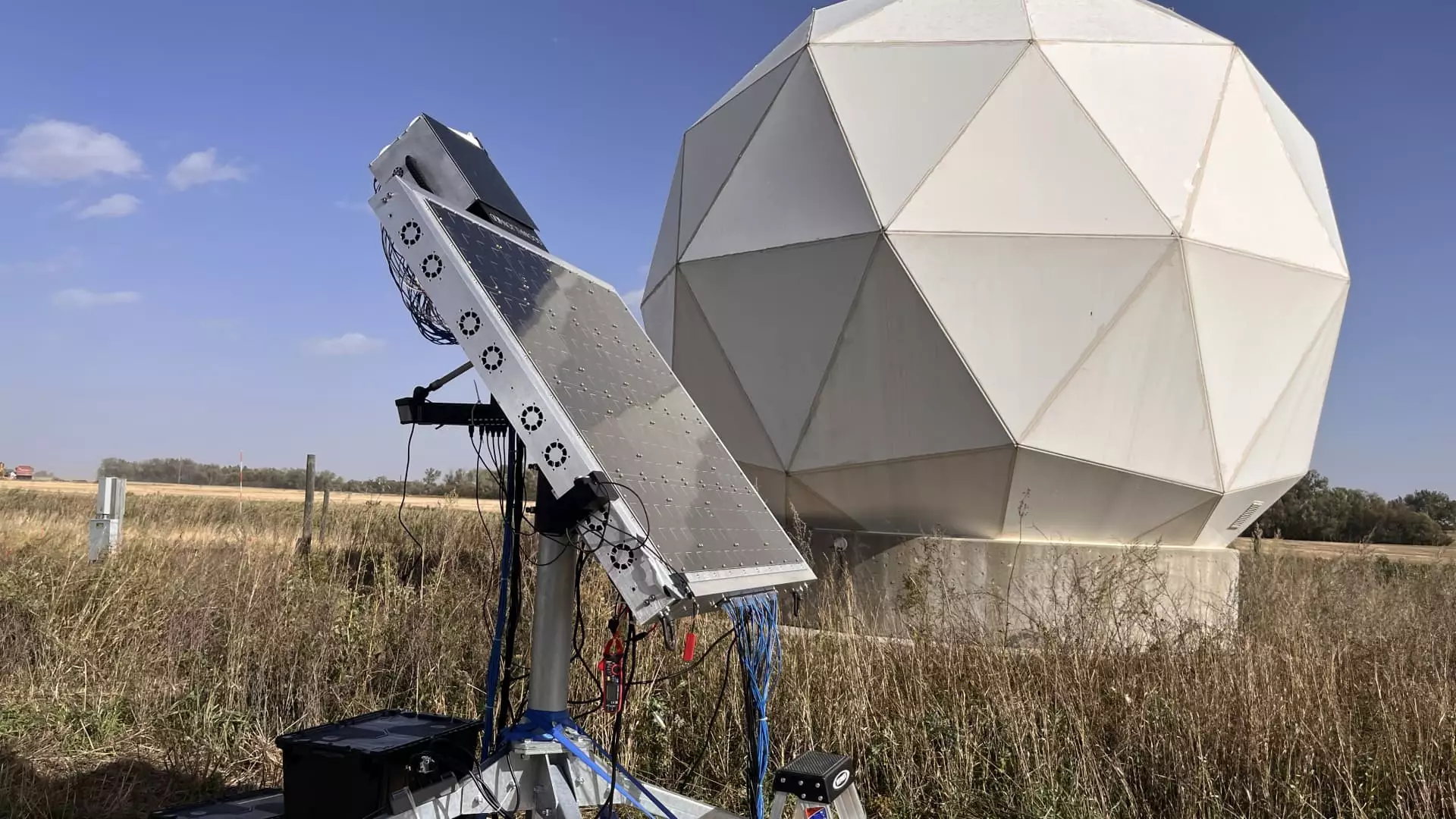In the rapidly evolving landscape of satellite communications, Northwood Space is making waves through innovative technology and strategic vision. Founded by Bridgit Mendler, a former television star turned technology entrepreneur, this California-based startup recently achieved a significant milestone by establishing communication with Planet Labs’ imagery satellites. This success not only highlights Northwood’s innovative approach but also sets a hopeful precedent for the future of space connectivity.
Central to Northwood’s breakthrough is its use of phased array technology, a method that enables the creation of digital antennas capable of directing signals without the need for physical movement. Mendler expressed her enthusiasm during an interview, clearly stating how this technology has been tested both in controlled lab settings and real-world scenarios. The company’s ambitious system, dubbed Portal, is designed to alter the landscape of ground station technologies, traditionally reliant on parabolic dish antennas that can connect with only a handful of satellites at a time.
Mendler emphasized a crucial advantage of the Portal system: its potential to connect with up to ten satellites simultaneously. This dramatically enhances operational efficiency, making it a substantial upgrade over past technologies, which typically managed only one to three connections. By pioneering a scalable, efficient, and effective ground station model, Northwood aims to redefine the connectivity standards in the satellite communication sector.
The rise of Ground Station as a Service (GSaaS) is revolutionizing how satellite communications are handled on Earth. Northwood isn’t alone in seeing potential in this market; major players like Amazon have launched services, further validating the demand for efficient ground station solutions. However, Mendler believes that Northwood’s solution addresses a critical gap within the industry. She argues that existing systems are outdated, often plagued by costly operations and service interruptions.
Drawing a parallel to the evolution of cellular networks, Mendler envisions a model wherein ground stations function similarly to cell towers, enabling a shared access framework that could lead to enhanced efficiency and cost-effectiveness. She draws an analogy to the past struggles of various telecom entities that eventually shifted their infrastructure to specialized tower companies. This strategic pivot, she asserts, is what Northwood seeks to emulate within the satellite industry.
As the satellite communication field is witnessing unprecedented growth and investment, Mendler states that the demand for efficient ground stations has never been greater. She describes the ground infrastructure as “the third leg of the stool” necessary for sustainable advancement alongside rockets and satellites. This perspective illustrates not just an understanding of technology, but a vision for an interconnected future wherein ground stations catalyze rapid growth and innovation.
In a recent field test in Maddock, North Dakota, Northwood showcased its flagship antenna, named “Frankie.” This test exemplifies Northwood’s commitment to swift deployment and success, with the antenna set up in a mere six hours and achieving bidirectional communication with Planet’s satellite without any operational disruptions. This successful validation not only affirms the technology but also marks a critical progression for Northwood in its quest to establish itself as a leading player in ground-based satellite communication.
Northwood’s ambitions don’t end here. With plans underway to deploy its Portal sites across the globe—including locations in the U.S., Europe, Australia, and New Zealand—the company is positioning itself as a vital component of the burgeoning satellite landscape. Each developed site aims to support multiple satellite connections while delivering substantial data rates, pushing past the traditional barriers of satellite communication tech.
According to Mendler, the company is vehemently optimistic about what the future holds. Their success at this juncture signifies not just a technical achievement, but the potential for a substantial reshaping of the entire space economy. By unlocking new possibilities for connectivity, Northwood aims to foster a movement that redefines efficiency and accessibility in satellite communications.
Northwood Space’s innovative approach aligns technology with pragmatic industry needs, holding promise for transformative impacts in satellite communications. As the sector experiences dramatic shifts, the firm, led by Mendler, appears poised to emerge as a key player in shaping the next chapter of space connectivity.

Leave a Reply